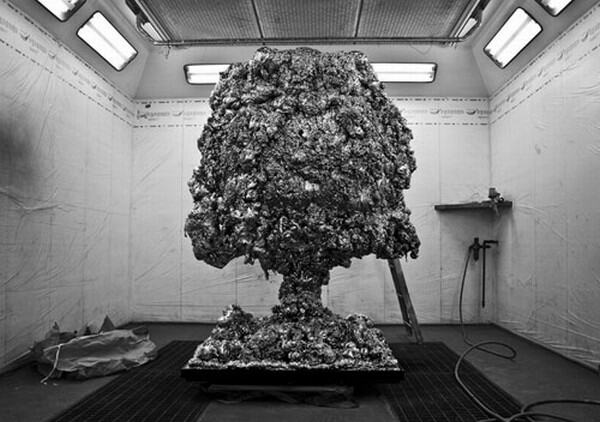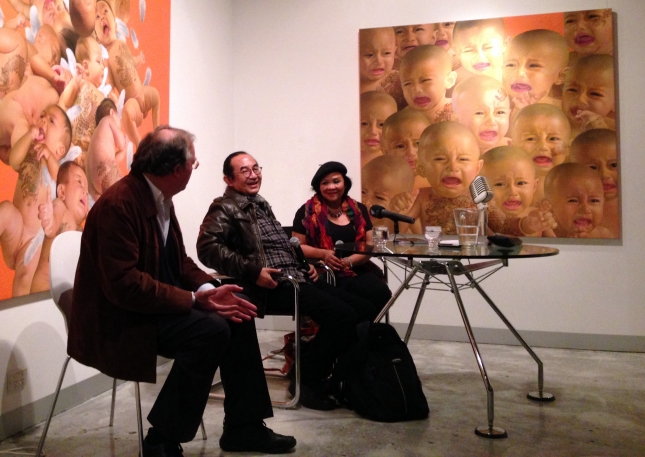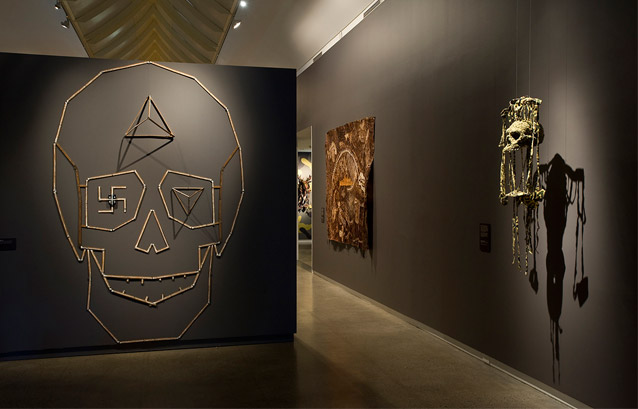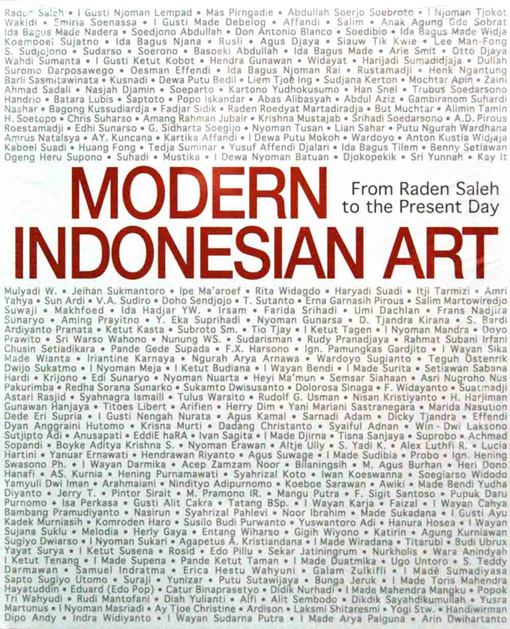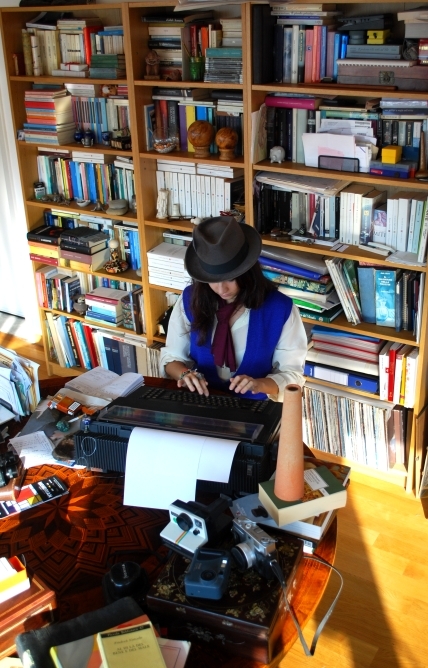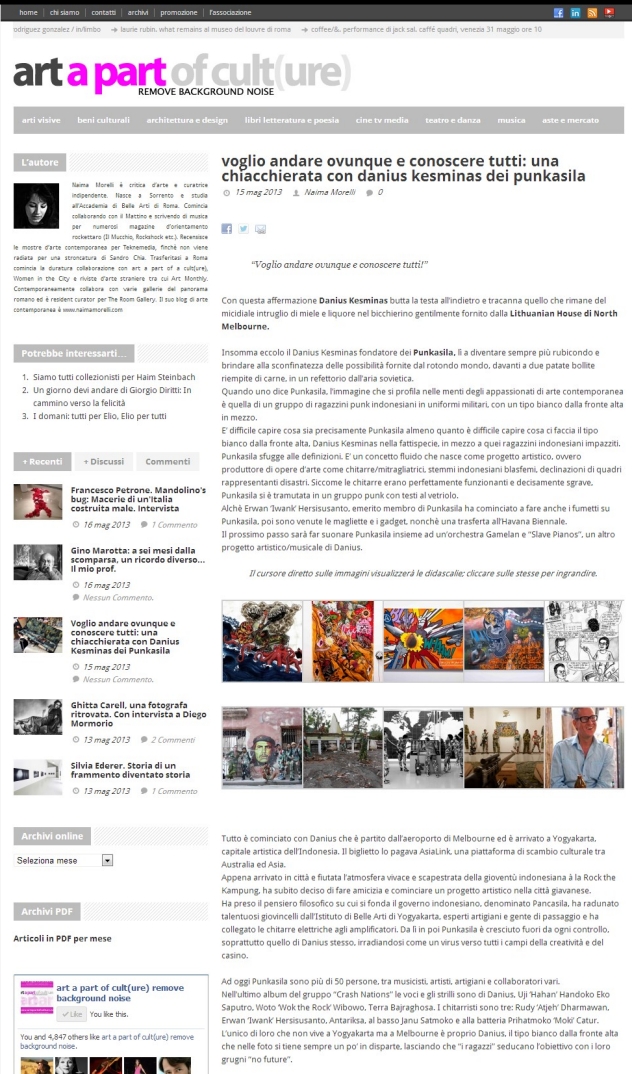
Dunque, per quanto surreale possa sembrare, è veramente successo. Ashley Bickerton, Luigi Ontani e Filippo Sciascia si sono effettivamente incontrati nella stessa stanza.
Chiaramente c’è qualcosa che questi tre eccezionali artisti, così diversi tra di loro per pratica artistica e personalità, hanno in comune. Bali.
Bickerton e Sciascia ne hanno fatto la propria dimora, Ontani vi soggiorna spesso fin dagli anni ’80, da quando ha cominciato a far produrre le proprie maschere agli artigiani locali.
Dico, riuscite a immaginarvi Ontani, aristocraticamente vestito di seta e con la sua elaborata parlata infarcita di giochi di parole, dialogare amabilmente con Ashley Bickerton, camicia da surfista e flip flop, il quale dichiara candidamente di sentirsi in certe situazioni “Come una scorreggia in una cabina telefonica?”.
Fortunatamente c’è Sciascia che funge da elemento di raccordo. Lui, molto gentiluomo noncurante col sopracciglio lirico, ma spiegato come un radar alla ricerca di stimoli tra cultura alta e bassa.
Ashley Bickerton possiede un dipinto di Sciascia che tiene in bella mostra a casa sua, una Giuditta dal seno rifatto e le labbra impertinenti che brandisce la testa di Oloferne: “Mi piace perché è un soggetto della pittura classica, ma è così chiaramente un’immagine presa da qualche porno!”
Ontani, il quale pure inserisce elementi suggestivi nelle sue ceramiche, conosceva Ashley Bickerton fin dagli anni ’80, momento più fulgido per l’artista americano. Sciascia invece Ontani l’ha incontrato proprio a Bali.
Il fatto è che Bickerton, Ontani e Sciascia sono bulè, è il nome con cui i balinese chiamano l’uomo bianco.
In una splendida mostra al Museo Archeologico di Napoli, curata da Maria Savarese, il trio si appropria ironicamente di questa parola, e dissemina balinesità tra le statue antiche della collezione Farnese del museo.



